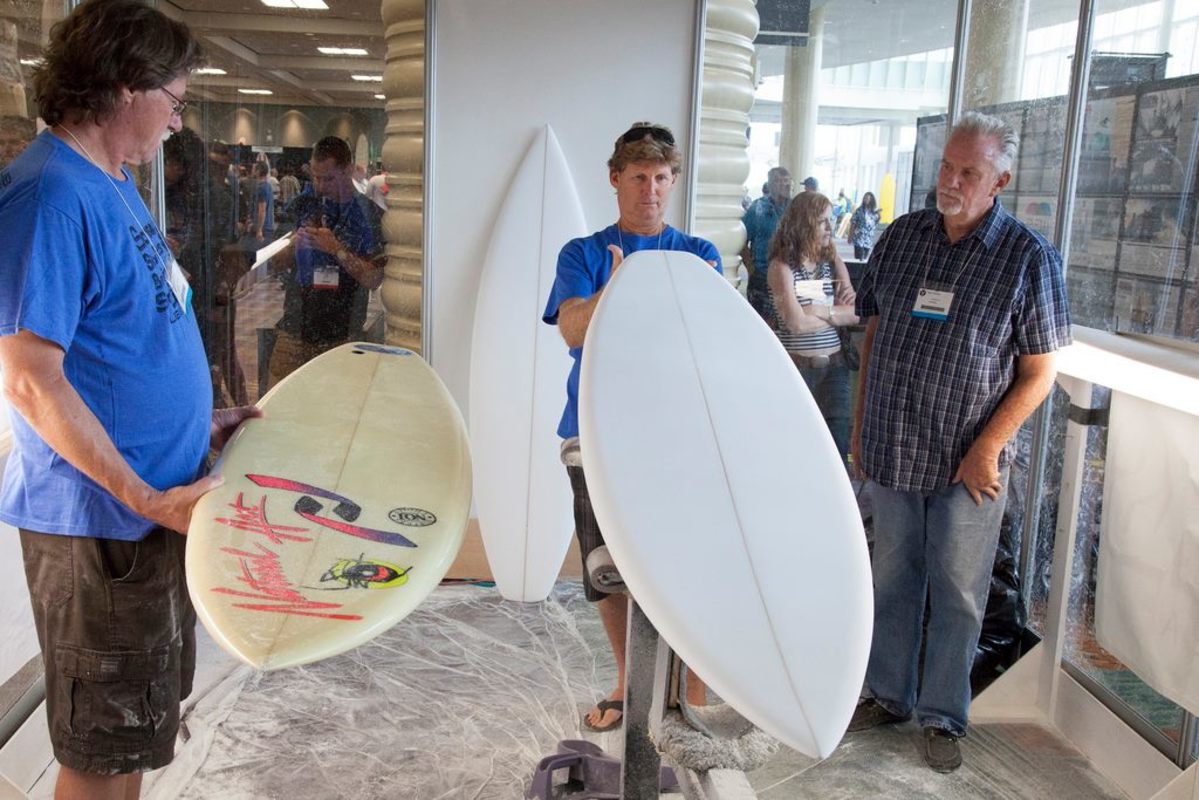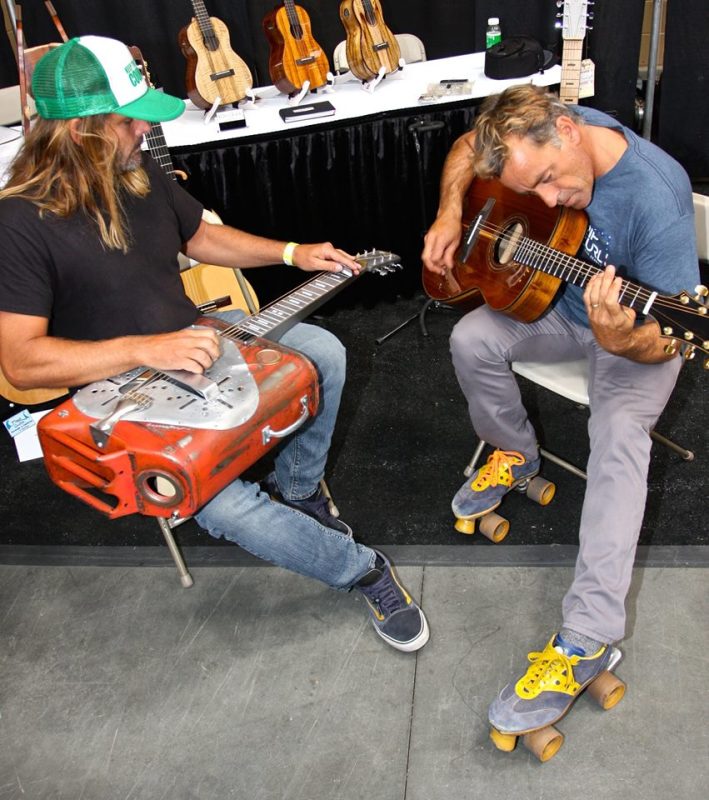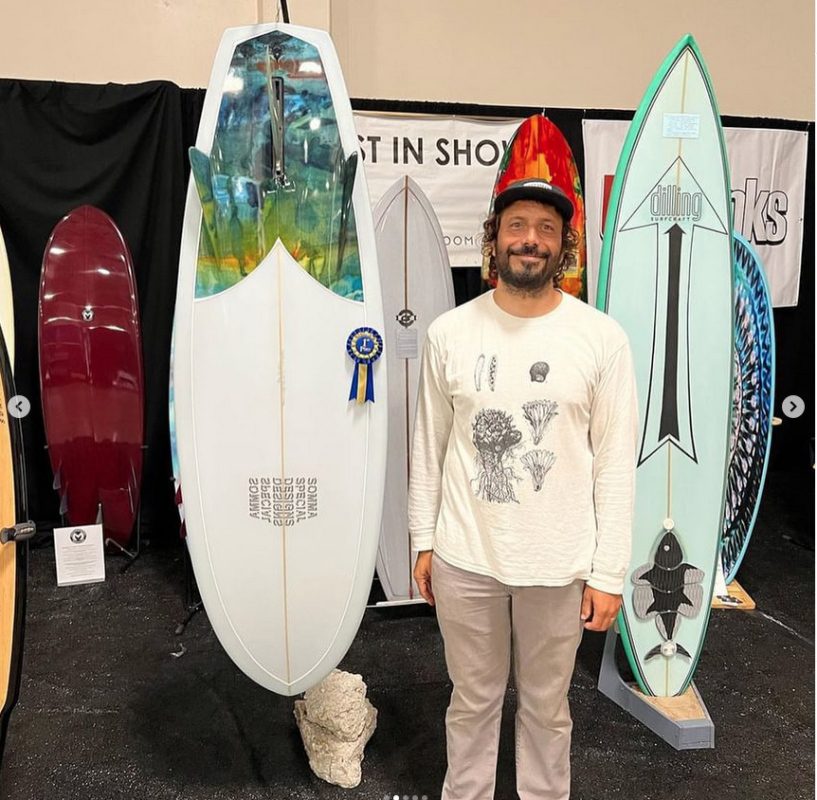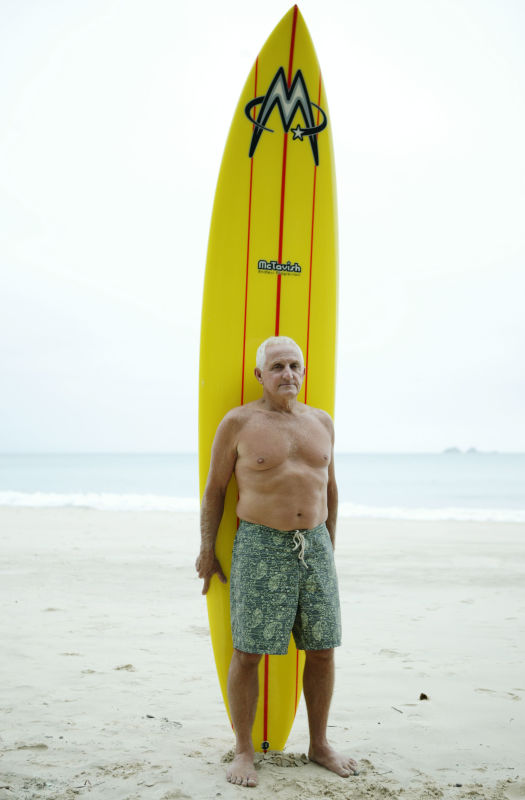
Photo: Boardroom Show
If you like to geek out on surfboards, or even have a passing interest in fiberglass and foam, consider attending an exhibition and homage next month in Southern California to those who have dedicated their lives to building them.
The 2024 Boardroom International Surfboard Show presented by US Blanks is set for October 12-13 at the Del Mar Fairgrounds. Founded in 2007, the Boardroom Show is a gathering that honors the thing that makes surfing possible and the men and women from around the world who spend their waking hours compelled to mow foam for our riding pleasure. There’ll be live music, Q&As, book signings and more. Single-day tickets go for $20. You can get a weekend pass for $30 online here.

Photo: Boardroom Show
The event has two main pillars: Icons of Foam (which highlights a legendary shaper with a board-building contest from select participants) and Best in Show (where shapers showcase a specific design in a public exhibit). The show will also have a forum and book signing with The Surfer’s Journal Creative Director Scott Hulet, a discussion on wave pool technology with Wavepool Magazine founder Brian Dickerson and a panel with the 2024 Icon of Foam himself, Bob McTavish.
This year’s Best in Show category is the twinzer, the four-fin setup that places two smaller fins forward from larger rear twins. The concept was invented by Will Jobson in Southern California in the late 1980s and then popularized by 1989 World Champion Martin Potter and his shaper, Glenn Minami. Surfers who adore twinzers say they combine the looseness of a twin but have added drive and projection. Any surfboard builder can enter their twinzer in the Best in Show for free and can win cash prizes. This is the first year entries will be judged by the public.

Photo: Boardroom Show
This year’s Icon of Foam is the eccentric and creative Bob McTavish. The 80-year-old Australian is credited as a founding father of the Shortboard Revolution in the late 1960s, and he’s still just as giddy about building boards today.
Here’s how the venerable Matt Warshaw’s Encyclopedia of Surfing describes the origins of McTavish’s exploits: “McTavish and Nat Young, along with California-born kneeboarder-designer George Greenough, had formed the core of the “involvement” school of surfing by mid-1966, and were all looking to ride more actively in and around the curl. As the garrulous McTavish explained, the idea was to ‘use the power part of the wave, [and] to maneuver really fast without any loss of speed.’ The average 9’6″, 25-pound board, McTavish knew, was far too bulky to allow this kind of riding. What Greenough was doing on his low-volume kneeboard — that was how McTavish wanted to ride, but standing up. In early 1967 McTavish began working on a new easy-turning bottom design, and in March he produced the first vee-bottom—a fat-tailed nine-footer with a deep vee-shaped keel through the back third of the board—that he nicknamed the Plastic Machine. He built a series of vee-bottoms over the next seven months, each getting progressively smaller and lighter, dropping all the way down to 7’6″ and 14 pounds.”
Related: Interview: Bob McTavish’s Lifelong Mission To Make A Better Surfboard
Leaning on 60 years of shaping experience, McTavish will judge eight shapers in the Icons of Foam contests, where they will compete in one-on-one “heats” to replicate his designs. This year’s shapers include defending champion Michael Arenal and the East Coast Surf Expo Shape-Off champion Jordan Brazie. The remaining were handpicked by McTavish himself: Ryan Burch of Encinitas, Josh Hall of San Diego, Axel Lorentz of France, Grant Noble of Costa Mesa and Moon Custom Shapes from South Korea. The winning shaper gets $2,000 and their name on the Mike Marshall Perpetual Trophy. The second-place shaper receives $500. It’s worth noting that the Best in Show twinzer theme is unrelated to McTavish. The Best in Show and Icons of Foam are two sides of one coin.

Photo: Andrew Quilty/Getty Images
“Bob McTavish is sort of at the nexus between the change from longboards to shortboards,” said Boardroom Show Executive Director Scott Bass. “He’s the germinating shaper who led the Shortboard Revolution. His whole thing was that he wanted to drive the surfboard from the tail of the board. He wanted to get away from moving your feet forward to get momentum. And he was fascinated by George Greenough, who had the ability on his kneeboard to do everything from one position. That really captivated McTavish. Bob and George were dear friends and roommates and they talked endlessly about surfboard design. It was a big deal to Bob, he really wanted to find that place where he would never have to move his feet. Where the engine and the drive and the trim came from the same place. And that led him to a bunch of different designs. Eventually, he got to that place. In my eyes, and I think history’s eyes, I think he’s the godfather of the Shortboard Revolution.”
We’ll be sharing more insight on McTavish’s enduring legacy in upcoming articles. Stay tuned for an interview with shapers 30 years his junior who will replicate his designs in the shaping bay next month. In the meantime, you can learn more about the Boardroom Show and buy tickets here.
Related: Stephanie Gilmore Rips A Custom Single Fin Asym From Bob McTavish

